
Raj Kapoor, also known as Ranbir Raj Kapoor, was an Indian actor, film director and producer, who worked in Hindi cinema. He is considered one of the greatest and most influential actors and filmmakers in the history of Indian cinema, and has been referred to as The Greatest Showman of Indian Cinema and as the Charlie Chaplin of Indian Cinema.
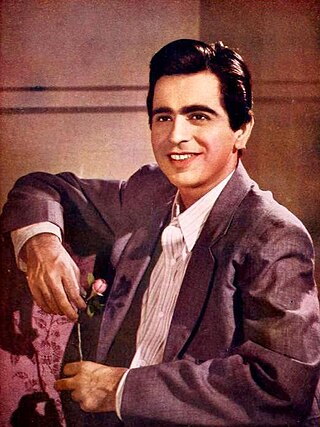
Dilip Kumar was an Indian actor who worked in Hindi cinema. Credited with pioneering method acting in cinema, after Motilal, he dominated the Indian cinema from late 1940s throughout 60s, being referred to as Abhinay Samrat. Kumar holds the record for most wins for the Filmfare Award for Best Actor and was also the inaugural recipient of the award. He holds the most dominant box-office record for a star in Hindi cinema with over 80% box-office successes and several long-standing gross records.
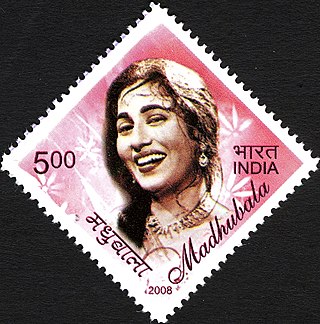
Madhubala was an Indian actress who worked in Hindi-language films. Regarded as one of the greatest actresses in the history of Indian cinema, Madhubala was the highest-paid Indian star in the early 1950s. In a career spanning more than 20 years, Madhubala had appeared in over 60 films by the time of her death in 1969.
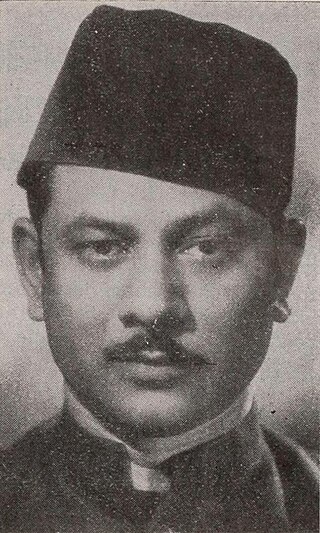
Mehboob Khan was a pioneer producer-director of Indian cinema, best known for directing the social epic Mother India (1957), which won the Filmfare Awards for Best Film and Best Director, two National Film Awards, and was a nominee for the Academy Award for Best Foreign Language Film. He set up his production company – Mehboob Productions, and later a film studio – Mehboob Studios in Bandra, Mumbai in 1954. He also created the dacoit film genre with Aurat (1940) and Mother India, and is also known for other blockbusters including the romantic drama Andaz (1949), the swashbuckling musical Aan (1951), and the melodrama Amar (1954).

Nimmi, was an Indian screen actress who achieved stardom in the 1950s and early 1960s in Hindi films. She was one of the leading actresses of the "golden era" of Hindi cinema.

Shakti: The Power is a 2002 Indian Hindi-language crime drama film directed by Krishna Vamsi, starring Karisma Kapoor, Nana Patekar, and Sanjay Kapoor in leading roles, with Shah Rukh Khan, Deepti Naval, Ritu Shivpuri, Anupam Shyam, and Prakash Raj, in supporting roles. The film is a remake of 1998 film Anthahpuram, which was based on the real-life story of Betty Mahmoody. The original story of real life escape of Betty Mahmoody is depicted in the film Not Without My Daughter (1991) which itself was based on Betty Mahmoody's book of the same name. In the film, Shekhar and Nandini's decision to visit his ancestral house in a rural Indian town goes awry when they find themselves embroiled in a feudal gang war and try to return home to Canada.

Nadira, was an Indian actress who worked in the Hindi film industry. She appeared in films from the 1950s and 1960s, including Aan (1952), Shree 420 (1955), Pakeezah (1972), and Julie (1975), which won her the Filmfare Best Supporting Actress Award.

Cuckoo Moray, also credited as Cuckoo or Cukoo, was an Anglo-Indian dancer and actress in Indian cinema. Cuckoo was the queen of film dancing in Hindi cinema of the 1940s and 1950s. Though unfamiliar in name, she was known as the "rubber girl" of Hindi cinema and her talent made cabaret dancing a must in the Bollywood films during the 1940s and 1950s. It has been recently confirmed that Cuckoo's real name was Cuckoo Moray.

Andaz (transl. Style) is a 1949 Indian Hindi language romantic drama film, directed by Mehboob Khan, with music by Naushad. The film stars Nargis, Dilip Kumar, and Raj Kapoor in a love triangle, with Cukoo and Murad in supporting roles. The film's music was provided by Naushad and lyrics by Majrooh Sultanpuri. It is the only film to feature Dilip Kumar and Raj Kapoor together onscreen.
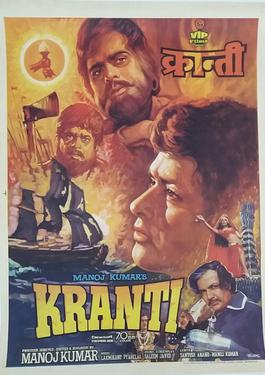
Kranti (transl. Revolution) is a 1981 Indian historical drama film, produced, edited, dialogue and directed by Manoj Kumar, with the story and screenplay written by Salim–Javed. It stars an ensemble cast, consisting of Dilip Kumar in the title role along with Manoj Kumar, Shashi Kapoor, Shatrughan Sinha, Hema Malini, Parveen Babi in pivotal roles. The film also marked the return of Dilip Kumar after a four-year hiatus. It ranks among the top 10 highest grossing Indian films of all time, when adjusted for ticket-price inflation. It was one of the most expensive Indian films of the time and it went on to become the highest grossing Indian film of the 1980s decade by a distance, when adjusted for inflation. Kranti is the biggest patriotic hit ever seen in India. It was the second highest grossing Indian film ever behind Sholay (1975) at the time of its release. However, it did higher business than Sholay in its original run. It grossed ₹20 crore as compared to ₹15 crore of Sholay in the original run. Sholay did exceptionally well in re-runs earning more profit in the meanwhile period.

Baiju Bawra is a 1952 Hindi musical romantic drama film directed by Vijay Bhatt. Produced by Prakash Pictures, with story by Ramchandra Thakur and dialogues by Zia Sarhadi, Baiju Bawra was a musical "megahit" which had a mighty 100-week run in the theatres. Bhatt's decision to make a film based on classical music was met with scepticism by the Indian film industry due to its "lack of mass appeal", but the film and music turned out be an "overwhelming success".

Ganga Jamna, also transliterated as Ganga Jamuna or Gunga Jumna, is a 1961 Indian crime drama film, written and produced by Dilip Kumar, and directed by Nitin Bose, with dialogues written by Wajahat Mirza; Kumar later said that he also ghost-directed and edited the film. It stars Dilip Kumar with Vyjayanthimala and his real-life brother Nasir Khan in the leading roles. Set in the rural Awadh region of Northern India, the film tells the story of two impoverished brothers, Ganga and Jamna, and their poignancy and sibling rivalry on opposing sides of the law, one a dacoit criminal and the other a police officer. The film was also notable for its Technicolor production, use of the Awadhi dialect, and its rustic setting, being a defining example of the dacoit film genre. It was ranked 11th in Outlook Magazine's poll considering 25 leading Indian directors' vote for Bollywood's greatest films in 2003.

Mere Mehboob is a 1963 Indian film directed by Harnam Singh Rawail and starring Ashok Kumar, Rajendra Kumar, Sadhana, Nimmi, Pran, Johnny Walker and Ameeta. The film became a blockbuster and took the number one position at the box office in 1963. A Muslim social film, it drew a background from Aligarh Muslim University, Aligarh and traditional Lucknow. The famous song "Mere Mehboob Tujhe Mere" was shot in the University Hall and in a couple of places, one gets to see the University. The opening scene of the movie shows the famous residential hall and the associated clock tower; "Victoria Gate".
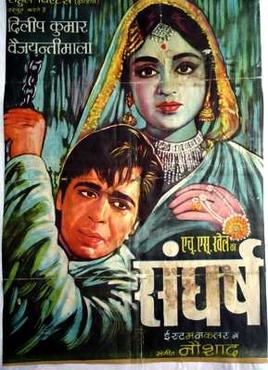
Sunghursh ("Struggle") is a 1968 Indian Hindi film directed and produced by Harnam Singh Rawail. It is based on Layli Asmaner Ayna, a short story in Bengali language by Jnanpith Award-winning writer Mahasweta Devi, which presents a fictionalised account of a vendetta within a thuggee cult in the holy Indian town of Varanasi. It stars Dilip Kumar, Vyjayanthimala, Balraj Sahni, Sanjeev Kumar, Jayant, Deven Verma, Durga Khote and Iftekhar. The film was the last one to see Dilip Kumar and Vyjayanthimala working together. Sunghursh was an "Average" grosser at box-office and was the tenth highest grossing film of the year.

Amar (transl. "Immortal") is a 1954 Indian Hindi-language romantic drama film produced and directed by Mehboob Khan. Dealing with the controversial subject of rape, the film revolves around the titular upper-class lawyer, his feminist fiancé, the social worker Anju Roy (Madhubala), and Sonia (Nimmi), a poor milkmaid.

Son of India is a Bollywood film released in 1962. This film was written and directed by Mehboob Khan, starring Sajid Khan, Kamaljit, Simi Garewal, Jayant and Kumkum. The music was composed by Naushad and with Shakeel Badayuni as the lyricist. It was a spiritual successor to Mehboob Khan's previous film, Mother India (1957).

Leela Mishra was an Indian actress. She worked as a character actor in over 200 Hindi films for five decades, and is best remembered for playing stock characters such as aunts. She is best known for her role of "mausi" in the blockbuster Sholay (1975), Dil Se Mile Dil (1978), Baton Baton Mein (1979), Rajesh Khanna films such as Palkon Ki Chhaon Mein, Aanchal, Mehbooba, Amar Prem and Rajshri Productions hits such as Geet Gaata Chal (1975), Nadiya Ke Paar (1982) and Abodh (1984). Her career's best performance was in Naani Maa in 1981, for which she received Best Actress award at the age of 73.
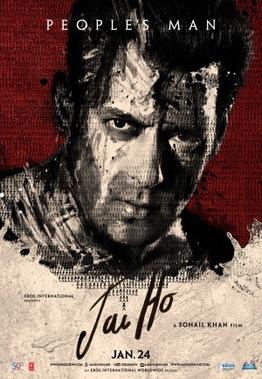
Jai Ho is a 2014 Indian Hindi-language political action drama film directed by Sohail Khan, who also produced the film under the banner Sohail Khan Productions and co-produced by Sunil Lulla under Eros International, which distributed the film. It is an official remake of the Telugu film Stalin, which is also inspired by the American-drama film Pay It Forward. The film stars Salman Khan, Tabu, Daisy Shah, Danny Denzongpa, Sana Khan and Aditya Pancholi, while Sunil Shetty, and Genelia D'Souza make cameo appearances.
The term Khans of Bollywood refers to several actors of Bollywood, the Mumbai-based Hindi language Indian film industry, whose surnames are Khan. Most commonly, this involves the Three Khans: Salman Khan, Shah Rukh Khan and Aamir Khan. The three are unrelated, but happen to share the same surname, and were all born in 1965. Due to their longevity and high popularity, they are considered among the most successful movie stars in the history of Indian cinema.



















